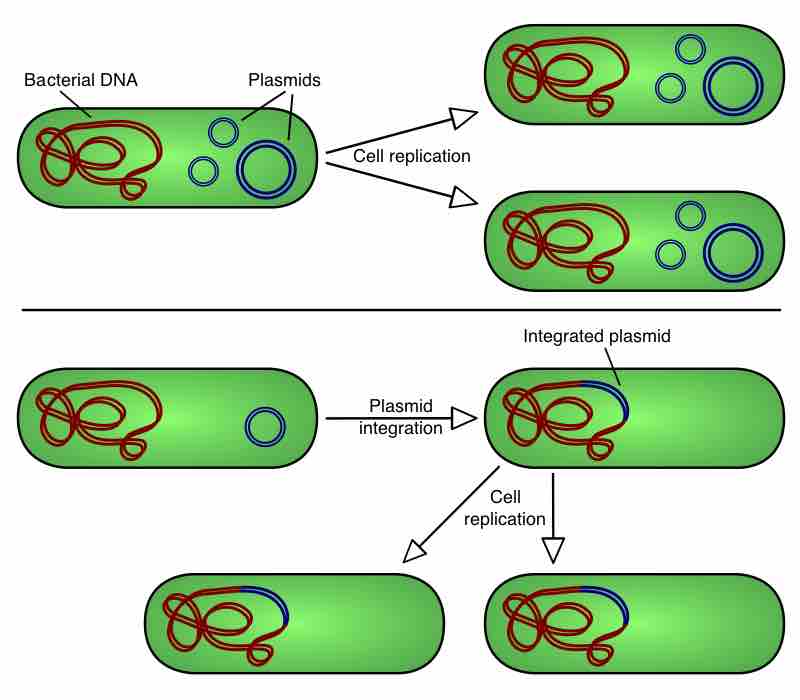In microbiology and genetics, a plasmid is a DNA molecule that is separate from, and can replicate independently of the chromosomal DNA.They are double-stranded and, in many cases, circular. Plasmids usually occur naturally in bacteria, but are sometimes found in archaea, and even in eukaryotic organisms (e.g., the 2-micrometre ring in Saccharomyces cerevisiae).
Plasmid sizes vary from 1 to over 1,000 kbp. The number of identical plasmids in a single cell can range anywhere from one to thousands under some circumstances. Plasmids can be considered part of the mobilome because they are often associated with conjugation, a mechanism of horizontal gene transfer.
The term plasmid was first introduced by the American molecular biologist Joshua Lederberg in 1952.
Plasmids are considered replicons .They can be found in all three major domains: Archaea, Bacteria, and Eukarya. Similar to viruses, plasmids are not considered by some to be a form of life. Unlike viruses, they are naked DNA and do not encode genes necessary to encase the genetic material for transfer to a new host, though some classes of plasmids encode the sex pilus necessary for their own transfer. Plasmid host-to-host transfer requires direct mechanical transfer by conjugation, or changes in incipient host gene expression allowing the intentional uptake of the genetic element by transformation. Microbial transformation with plasmid DNA is neither parasitic nor symbiotic in nature, because each implies the presence of an independent species living in a commensal or detrimental state with the host organism. Rather, plasmids provide a mechanism for horizontal gene transfer within a population of microbes and typically provide a selective advantage under a given environmental state. Plasmids may carry genes that provide resistance to naturally occurring antibiotics in a competitive environmental niche, or the proteins produced may act as toxins under similar circumstances. Plasmids can also provide bacteria with the ability to fix elemental nitrogen or to degrade recalcitrant organic compounds that provide an advantage when nutrients are scarce.

Step by step of cloning a gene using a plasmid
This image shows a line drawing that compares the activity of non-integrating plasmids, on the top, with episomes, on the bottom, during cell division. The upper half of the image shows a bacterium with its chromosomal DNA and plasmids dividing into two identical bacteria, each with their chromosomal DNA and plasmids. The lower half of the image shows a bacterium with its chromosomal DNA, but with an episome. Next to this bacterium, we see the same bacterium, but after the episome has integrated into the chromosomal DNA and has become a part of it. This second bacterium now divides into two bacteria identical to it, each with an episome integrated into it.